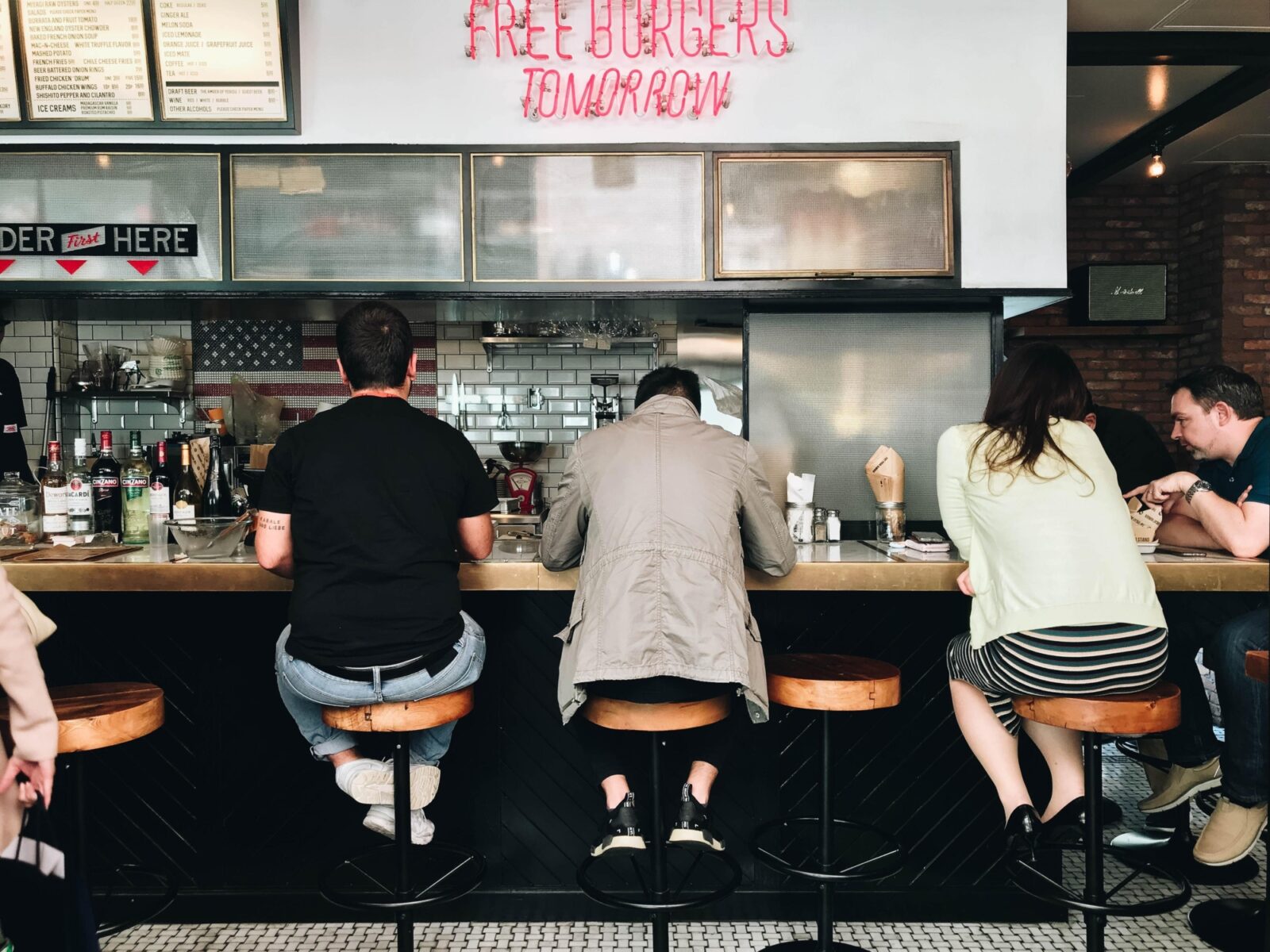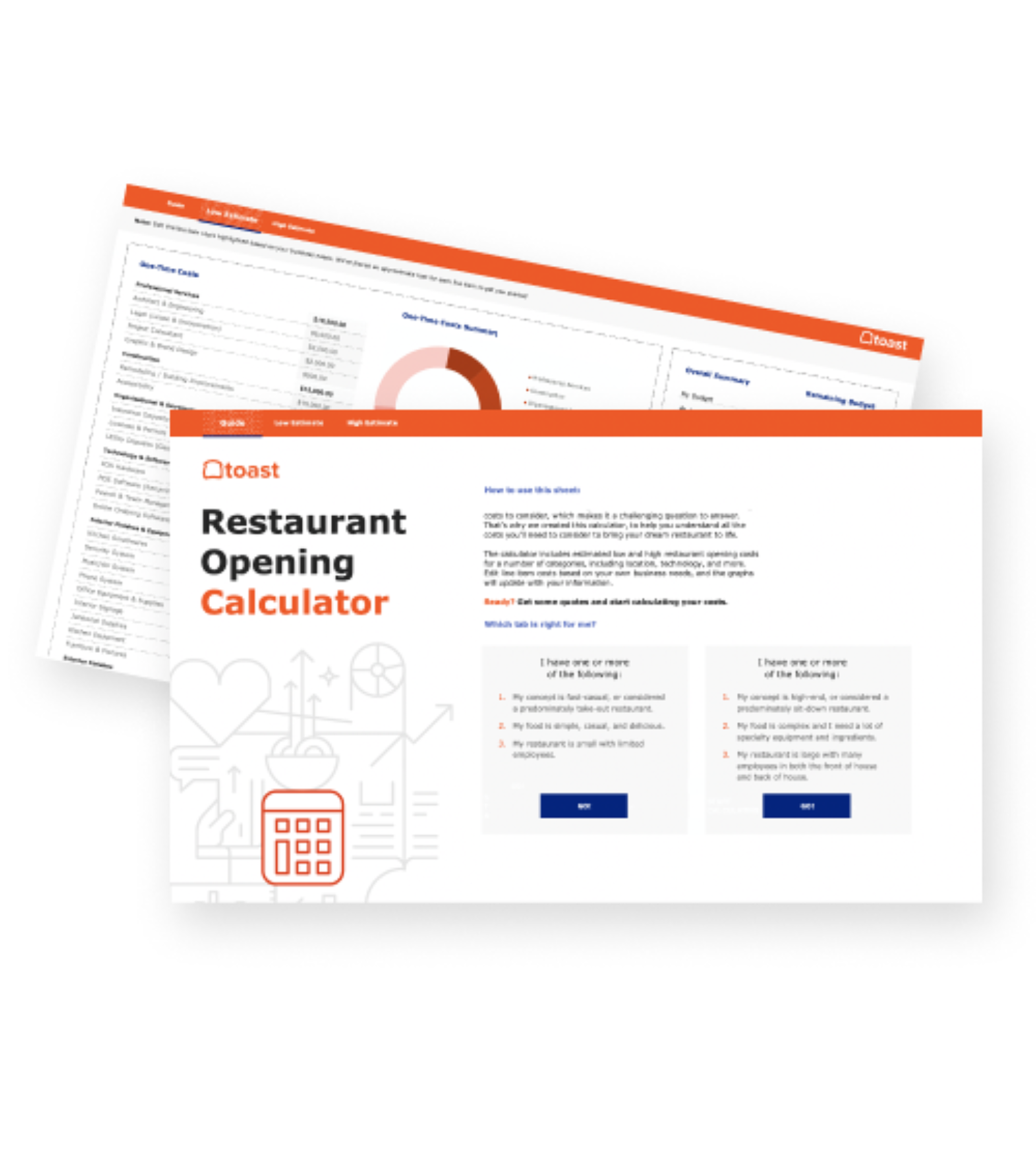
What is a Chain Restaurant?
Wondering what a chain restaurant is? We'll cover the basic definition and qualities of a chain restaurant plus give examples.

Caroline PriceAuthor


Restaurant Opening Calculator
This calculator lays out some of the fundamental financial costs of opening a restaurant, so you can start planning and bring your dream restaurant to life.
Get free downloadThe restaurant industry is massive, and chain restaurants make up a significant percentage of it. If you’re looking to start your own chain restaurant, or just want to learn more about them, keep reading.
What’s a chain restaurant?
In the simplest terms, a chain restaurant is a group of restaurants with many different locations that share a name and concept. They can either be owned by the same company or be individually owned through franchising. Though fast food is the most popular type of chain restaurant, restaurant chains don’t have to be a particular restaurant type. Chain restaurants can be sit-down, fast-casual, fine dining, or any other concept.
There are differing opinions when it comes to what makes a restaurant a chain, and how many locations are required. New York City, for example, considers any more than 15 locations a chain, but others argue that as few as three could constitute a chain.
Examples of Popular Chain Restaurants
Here are some of the most popular chain restaurants in the US:
Chipotle
McDonald’s
Burger King
Olive Garden
The Cheesecake Factory
Sonic
Texas Roadhouse
Applebee’s
Buffalo Wild Wings
Starbucks
Jimmy John’s
Panera Bread
Subway
Taco Bell
Wendy’s
How Do Chains Differ From Other Restaurants?
- Corporate policies and standardization
Larger companies generally require stricter rules and regulations, especially when there are hundreds or thousands of locations. Guests are looking for consistent experiences across all restaurants in a chain, and this means that standard rules, regulations, and policies are put in place to keep everything consistent – regardless of location.
Menu items, staffing, operating procedures, store layout, design, and pretty much everything else are consistent across all big chain restaurants, with generally little room for creativity.
Bigger Staff (and often, more benefits)
Of course, more restaurants will need more staff members. With a larger, more established restaurant chain, this can also come with more staff benefits. More resources and money can (and should!) be allocated towards better staff benefits – health insurance, parental leave, and paid time off are all options.
More Funding
Popular chain restaurants have more resources all around, and this can make it easier to fund new innovations and growth. More funding allows restaurants to grow faster, offer competitive pay and benefits, and take more risks (hopefully leading to more rewards).
What was the first chain restaurant?
The first restaurant chain dates back to the 19th century.
The Harvey House restaurants, owned by the Fred Harvey Company, first served travelers along several railways spanning the western United States. The first restaurant opened along the Santa Fe Railway in 1878, and by the 1880s, there were over 17 Harvey House restaurants. The chain grew through the 1930s, building up operations to over 84 locations.
The business was sold in 1968 but laid the groundwork for many other restaurant chains to flourish with the same concept: building restaurants where people are looking for them.
What is the largest restaurant chain in the world?
Subway breaks the record for largest restaurant chain, with over 42,000 locations worldwide, in over 112 countries. Wondering what restaurant chain serves the most people in a year? McDonald’s is the winner here, with average daily customer traffic topping 62 million people.
How to start a chain restaurant
If you’re looking for information on how to open a chain restaurant, here are some steps to take.
Open one restaurant
The first step in starting your restaurant chain is to open the first location.
This guide provides your beginner’s checklist to opening a restaurant, from developing a business plan, funding your vision, picking a location, and creating your menu to get your chain off to a profitable, successful start.
A successful chain stems from a successful first location. Hiring and retaining a great team, keeping your finances healthy, using the right technology, and planning for growth are all key to eventually adding locations and expanding your operations.
Revise your business plan
Once you have a successful first location, the first step to opening a second location is a new business plan.
In this second business plan, you’ll finalize funding for this new location, figure out your plan for scaling your team, and lay out the steps to go from one location to two.
Start expanding
Once you’re at two, keep going with the third, fourth and fifth. Slow and steady growth is key for building a successful restaurant business.
Restaurant Business Plan Template
No matter where you’re at in your restaurant ownership journey, a business plan will be your north star. Organize your vision and ensure that nothing is overlooked with this free template.

How to Open a Restaurant Chain Franchise
Opening a restaurant chain franchise is another way to go about operating a chain restaurant, with much of the groundwork already in place. Most popular chain restaurants offer franchises.
Here are some steps to take when looking to open a chain restaurant franchise.
Do your research
The first step is to research what kind of franchise you want to buy. Market research is essential here. Look into what kind of restaurants are in your local area, which franchises already exist, what might be missing in the market, and how you can fill that need.
From there, you can dive deeper into what franchises fit that need, and make sense within your skills and interests. Here, you’ll want to look into how each individual company runs its franchises, the terms and conditions, start-up costs, and other essential information.
Don’t forget to set up a strong business plan at this point, as well.
Secure funding
Although a lot of the groundwork with the customer base, branding, and standard operating procedures are done with franchises, there are still high start-up costs.
The cost to open a franchise can quickly skyrocket – for example, the cost of opening a McDonald’s, Wendy’s, or Burger King averages around $1 million, according to Business Insider. Not every franchise is as expensive, but franchise fees, start-up costs, and royalty fees can add up quickly.
For some suggestions on where to start with securing restaurant financing, check out this post.
Start building
With a lot of research, a solid business plan, and secured funding, you’re ready to get started building your franchise. For more information on location planning, staffing, licenses and permits, and more, check out this post on How to Open a Restaurant.
Most major chains have info packets, applications, or seminars about what it takes to own and run a franchise, so compare your options among different chains and see what makes sense for you.
***
Whether you’re opening a new chain restaurant or are starting a franchise, planning is the key to success. For more ideas to inspire your new restaurant concept, check out this post.
Related Restaurant Resources
Is this article helpful?
DISCLAIMER: This information is provided for general informational purposes only, and publication does not constitute an endorsement. Toast does not warrant the accuracy or completeness of any information, text, graphics, links, or other items contained within this content. Toast does not guarantee you will achieve any specific results if you follow any advice herein. It may be advisable for you to consult with a professional such as a lawyer, accountant, or business advisor for advice specific to your situation.
Subscribe to On the Line
Sign up to get industry intel, advice, tools, and honest takes from real people tackling their restaurants’ greatest challenges.
